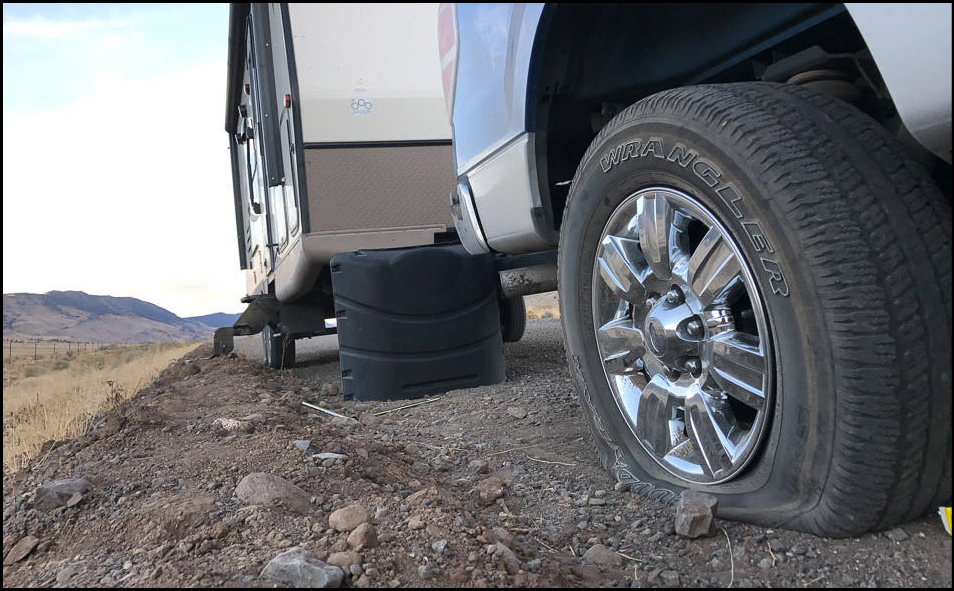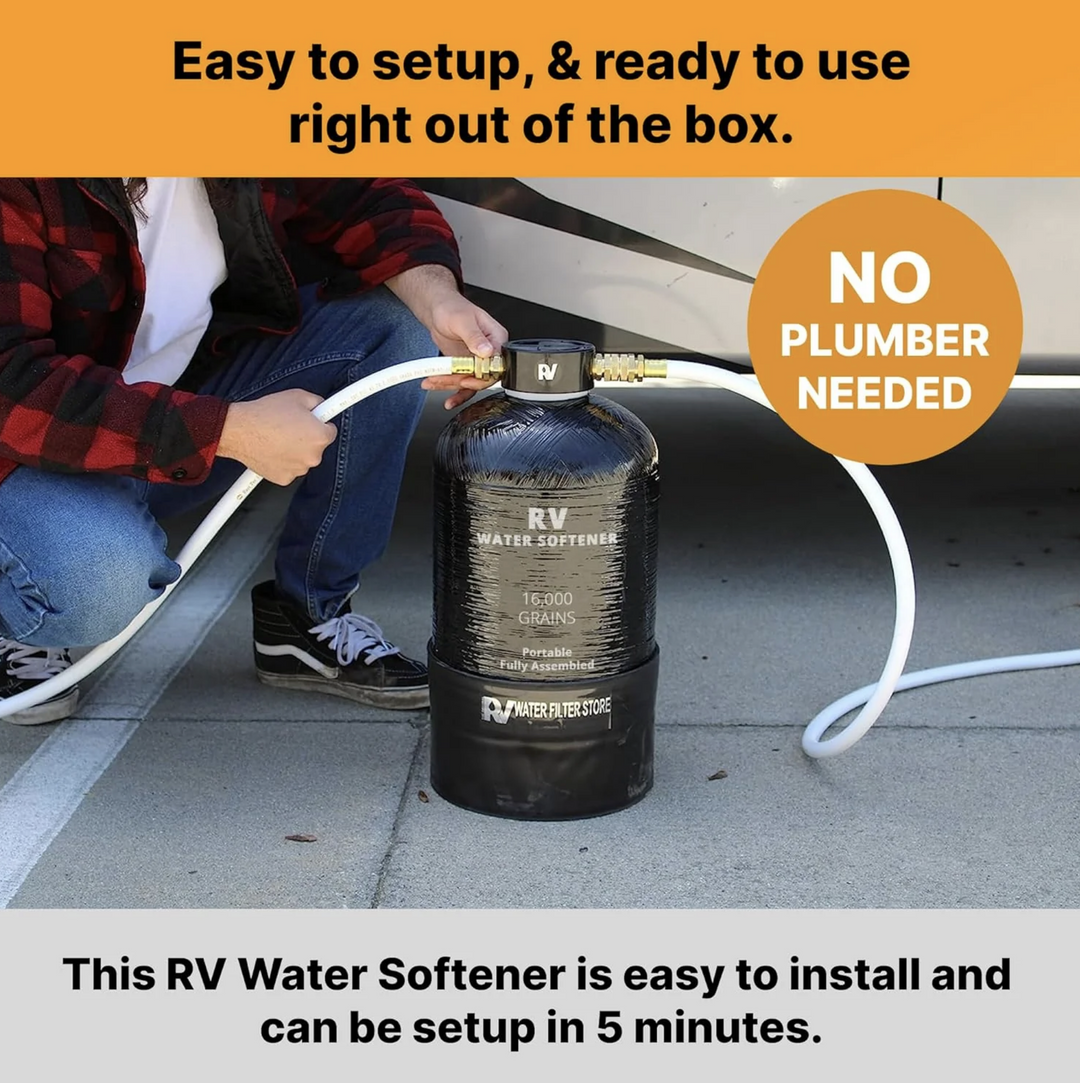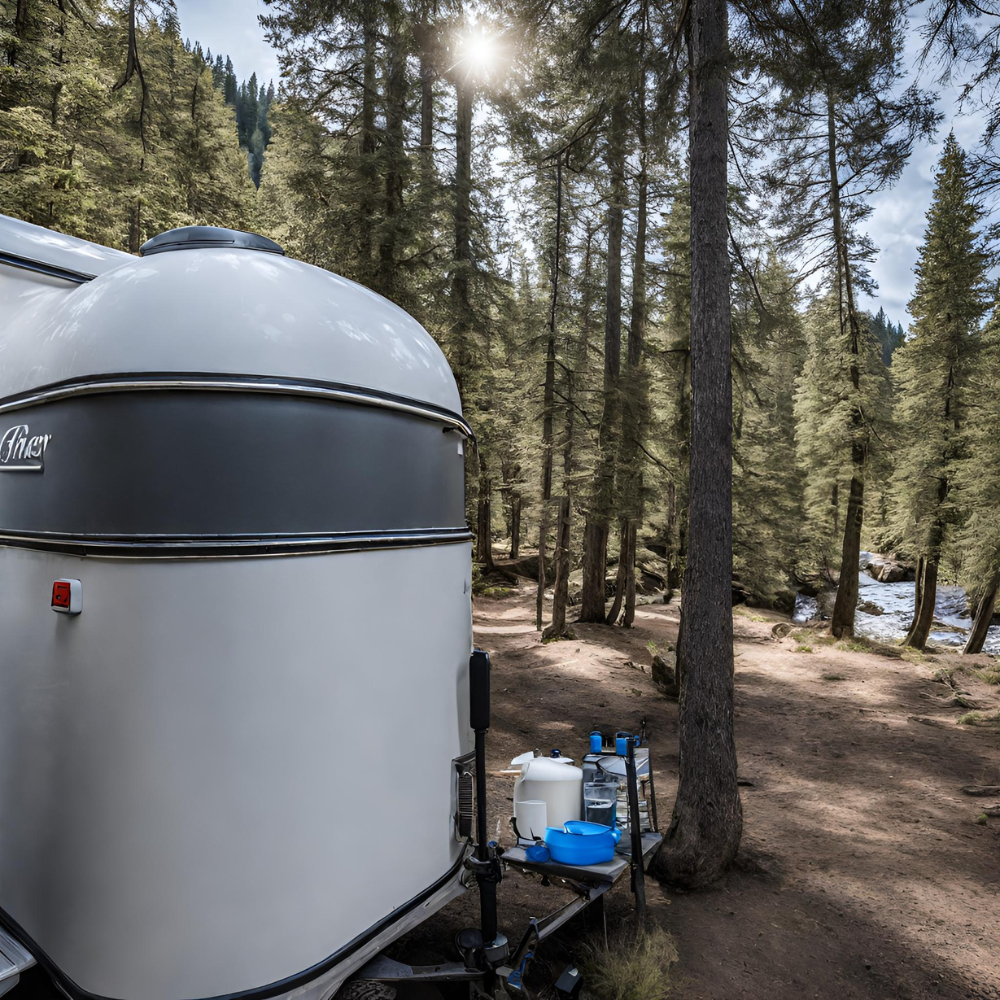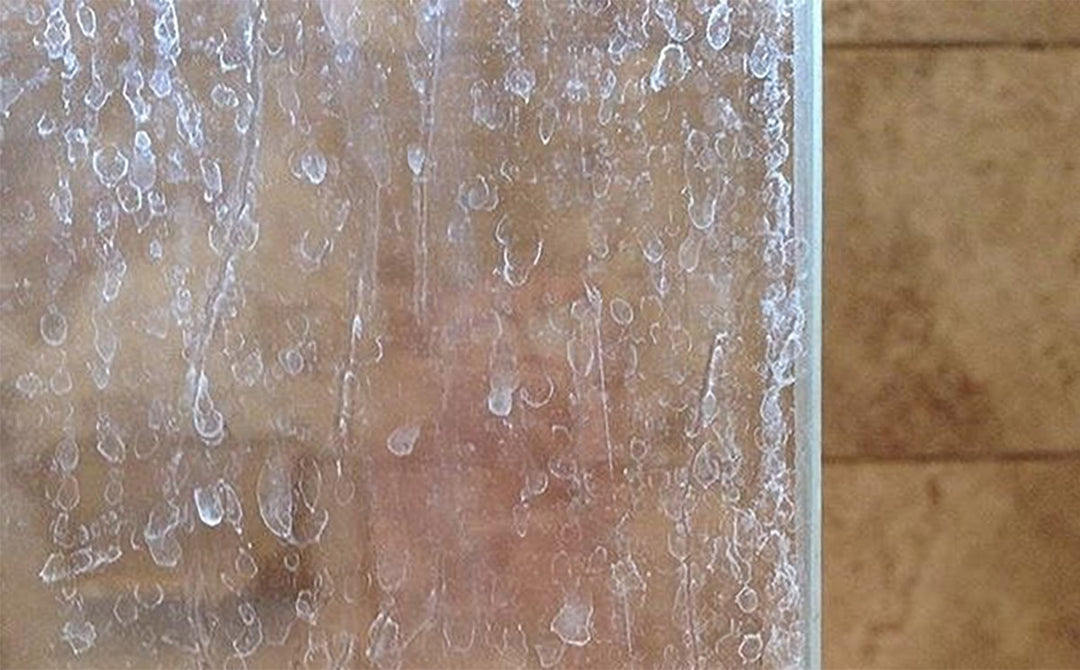RV vehicles can be particularly susceptible to tire blowouts for a number of reasons. These include:
- RV’s are often left stationary for extended periods of time, both in someone’s garage when they are at home and at various destinations. This can lead to tires suffering from dry rot which increases their chances of blowing out.
- RV’s are generally packed up with more items than “regular” vehicles. Therefore you are more likely to exceed their tire’s weight limits and do so for long periods of time. This puts undue pressure on tires and can increase the risk of their blowing out.
- When driving an RV, you are likely to be driving over a multitude of differing terrains (or at least your likelihood of doing this is more likely than when driving a “regular” vehicle). This makes it more difficult to select the correct type of tire for your vehicle’s needs and selecting the wrong type of tire can increase your risk of it blowing out.
- RVs are often purchased secondhand. If you purchase an RV secondhand and do not do due diligence on the condition of its tires, then you may suffer a tire blowout due to the poor conditions of the tires that you inherited.
We will now explain these most common causes of tire blowouts in your RV in a bit more detail and look into what you can do to prevent them from happening.
Keep your tires properly inflated throughout your journey
By far the most common cause of tire blowouts on any vehicle (RVs included) is driving on underinflated tires.
A lack of tire inflation can contribute to tire blowouts because it shifts downward pressure between the vehicle and the road from the tire’s tread (the “face” of the tire that comes into direct contact with the road) to the tire’s sidewall (the “side” of the tire that runs parallel to the frame of the vehicle).
The sidewall of a tire is less elastic than a tire’s tread. Therefore it is not designed to take a large amount of pressure. This is why underinflation can increase your risks of suffering tire blowout.
To make sure that your tires are always at their optimal pressure you should do the following:
- Purchase a tire pressure gauge and measure your tire pressure at least once a month (or once every three weeks if you are driving your RV extensively every day). A tire pressure gauge can be purchased for under $20 and is small enough to be kept in your vehicle at all times. Always check your tire pressure when your tires are “cold” (at least 2 hours after driving on them) as pressure will rise when they are being driven on.
- Make a note of the gas stations along your route that offer tire inflation facilities. Most gas stations offer this, but not all of them do so it’s worth checking beforehand.
- If you are travelling a long distance without passing a gas station then it might be worth buying a portable tire pump so you can inflate your tires yourself. These generally cost between $60–$80 and are small enough to be kept in your vehicle.
- If you are driving on a highway and the air temperature is above 80 Fahrenheit then try to take 30 minute breaks for every two hours driven. Friction from the road can cause tire pressure to increase, and a high air temperature can only exacerbate this. This can also cause tire blowouts as the pressure within the tire gets too high.
The only time that you should be riding on underinflated tires is if you are driving off road. In these instances you need to be riding on specialist off road tires and you should inflate them to no more than 20% lower than the recommended tire pressure in your vehicle’s manufacturers guide.
Storing your tire in a way that reduces their likelihood of dry rotting
People often underestimate the extent to which the way you store your tires when you are not driving on them can contribute to their overall health and resistance to blowing out. This is particularly true of RV tires, as such vehicles can remain stationary for extended periods of time when people are not travelling.
Tires are designed to be driven on regularly. They have oils and resins within them that keep the rubber supple, and therefore able to withstand the pressure and bumps that inevitably occur when being driven on, however these oils and resins need to be literally “ridden into” the tire to keep them locked in.
Therefore, when a vehicle remains stationary, these oils and resins can leech out of the tire causing the tire to dry out, become more brittle, and therefore more prone to blowing out when being driven on. This is what we refer to when we talk about tires “dry-rotting”
The most effective way that you can slow down the rate at which dry-rotting occurs in tires (it always happens to a small extent) is to regularly drive on tires. Just driving your RV for an hour every fortnight can allow its tires’ resins to be ridden back into the tire and to therefore delay the rate at which tires suffer dry rot.
If this is not possible, then you want to store your vehicle and its tires in a way that slows down the dry rotting process. Some ways that you can do this include:
- Make sure that your RVs tires are not in direct sunlight during any part of the day. If your vehicle is kept outside or in a garage with windows that will expose tires to direct sunlight, then it’s worth buying an opaque covering for your vehicle.
- Store your vehicle in a space that is neither too hot nor too cold. Temperatures above 77 Fahrenheit or below 10 Farenheit can increase the rate at which tires experience dry rot.
- Keep your stored RV away from open pots of paint, oil or paint primer as the fumes from these substances can increase the speed at which dry rotting occurs
- If you are parking your RV at a campsite then try to keep it parked on grass rather than on paved roads. This is because paved roads can get very hot during the day and this heat can increase the rate at which dry rotting occurs in tires.
If you plan to go on a long journey in your RV after keeping it in storage for a period of over 6 months, it is worth checking the tires for signs of dry rotting. You can do this very easily with a visual and tactile inspection (running your hand over the tread and sidewalls of the tire. Signs of dry rotting include:
- A greying of the tire
- Visible cracks appearing on the tread or sidewall on the tire (cracks on the tire’s sidewall are particularly concerning)
- Tires feeling dry and brittle to the touch rather than having a slight sponginess.
If you notice any of these when inspecting your tires then it is worth taking your RV to a mechanic for a proper tire maintenance check before you set off.
Make sure that you do not exceed your RVs weight capacity
Exceeding the amount of weight that your vehicle can carry puts undue downward pressure on its tires, thereby increasing their chances of blowing out. RVs are particularly likely to be overloaded due to the fact that they are often packed with supplies as well as people.
There are a few different weight ratings that vehicles have. These should never be exceeded. The weight ratings that are relevant to RV owners are:
- Gross Vehicle Weight Rating (GVWR): This refers to the maximum amount a vehicle can weigh including all of its contents. Make sure to take into account the people who will be travelling with you when calculating your vehicle’s GVWR as they contribute to this overall figure.
- Gross Trailer Weight Rating (GTWR): This refers to the maximum amount of weight that a vehicle’s trailer can be, including the axle that connects the driven vehicle to the trailer. If your trailer exceeds its GTWR then the trailer’s tires are at an increased risk of blowout. This rating is only relevant to RVers who travel with a trailer
You can find all the relevant weight ratings in your vehicle’s drivers manual. If you do not have the manual, which may be likely if you have bought the vehicle second hand, then you can usually find these ratings online.
If you are unsure if your vehicle exceeds any of its weight limitations, it may be worth taking it to a truck weighing station. These are dotted along highways and usually charge between $30-$60 to weigh your vehicle. Try to have as many of your passengers and supplies in your vehicle when you weigh it so you can get an accurate idea of what your RV’s weight will be when travelling.
Make sure that you use the right type of tires for the terrain that you are going to be driving on
Using the right type of tire for the terrain that you are driving on can prevent blowouts and punctures for the following reasons:
- Tires designed to be driven on paved roads are thinner than off road tires, and therefore are prone to punctures when driven off roads.
- Off road tires are thicker than standard tires and therefore risk blowout through overheating when driven for long distances at high speeds. Off road tires also usually have deeper tread than standard tires and therefore can shred when driven at high speeds over an extended period of time
If you plan to drive on solely tarmacked roads and will drive extensively on highways, then we would recommend driving on standard, or low rolling resistance tires. This will both save you fuel economy and will reduce the amount of heat created within your tire from friction with the road, thereby reducing the risk of blowout.
If you plan on spending any of your trip driving on grass or dirt roads, then you should off-road tires with at least a 10 ply rating (this refers to the thickness of the tire). 10 ply rated tires should be thick enough to withstand potential punctures from stones and other sharp debris.
No matter which tires you use, it’s always worth travelling with replacement tires if you are off-roading as punctures and blowouts are always more likely on these types of terrain.
If you plan on driving extensively on different types of terrains then you may want to consider having both standard and 10 ply rated tires. 10 ply rated tires should not be driven extensively on highways as they can blowout due to overheating.
If you are buying a second hand RV then make sure that you inspect its tires properly
When buying an RV, especially if you are buying it second hand, it’s well worth checking the condition of the tires to see if they need replacing to avoid putting yourself at risk of suffering a blowout.
The main issues that you are looking out for as far as tire health is concerned are:
- Cracks, bulges and unevenness in the sidewall of the tire: The sidewall of the tire is the most at risk part of blowing out. Therefore any indication of stress on this part of the tire means that it ought to be replaced. Run your fingers over the sidewall of the tires, they should feel even.
- The evenness of the tire tread: Run your fingers over the tread of the tires. Again these should feel uneven. Uneven wear on the tread of the tire can suggest that they have been extensively ridden on either overinflated or (more likely) underinflated. This can put the tire at greater risk of blowout.
- The age of the tire: You can read the age of the tire by looking at the numbers on its sidewall. The final four numbers on the inner ring of the tire’s sidewall refer to the year in which the tire was manufactured. You should never drive on tires that are more than 6 years old.
- The depth of the tire’s tread: It’s worth bringing a tire tread depth gauge when you go to purchase an RV. You should never ride on tires with a lower tread depth than 2/32 of an inch.
If you notice any of these faults in the RV’s tires you should try to get the cost of their repair or replacement factored into the amount that you pay for the RV. Furthermore you should inspect other parts of the RV carefully as poor tire maintenance could be indicative of poor vehicle maintenance more generally.
Conclusion: Prevention is key
Although tire blowouts are more common on RVs than on standard vehicles, you can still vastly reduce their chances of happening by taking proper tire maintenance steps.
Even if you do take these precautions, you should always be prepared with a spare tire and a tire changing kit if the worst were to happen and you suffer a blowout or a puncture on the road.
About the Author:
Mike Skoropad is the Owner and Head Technician at United Tires, a tire retailer in Chicago, Illinois.





